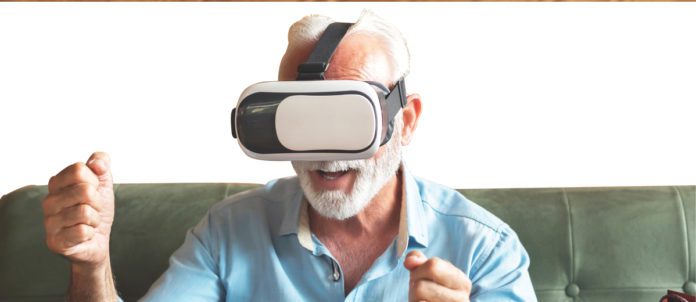The restaurant of the future has arrived and, like most futuristic incarnations, it’s surprisingly less obtrusive and more interactive than anticipated.
For those less hip on the specifics, here’s a primer: Augmented Reality (AR) uses technology to enhance an environment and is app-based. For example, “trying on” eyeglasses using an app, or animal Instagram filters. Virtual Reality (VR) is gear-based and immersive, such as a wraparound headset and video game experience.
Get with the Programing
The first question around technology in foodservice is where does it work best? As a visual means, AR/VR has first found its place in marketing, bringing menus to life and training employees.
Mike Cadoux is the managing director at QReal, a New York-based AR company that creates realistic 3D content for companies. (Picture sitting at a restaurant and deciding on menu items by swiping through AR dishes on your device that appear in front of you on the table.) He says, “Currently AR/VR is being deployed mostly for marketing purposes in the foodservice industry. Brands like Panera Bread and Applebee’s, for instance, have used Snapchat, Instagram and Facebook filters to promote new initiatives or deals as top of the funnel campaigns. They have seen really positive results to drive sales.”
Harpreet Munjal, the founder of LoudGrowth, a digital-marketing company, notes some foodservice businesses (KFC for example) are currently using VR to train employees.
Show 3D the Money
As with any new technology, there are obstacles to adoption, Cadoux says. “The main obstacle in using AR/VR for food is creating 3D models of their cuisine for use in the requisite platforms. Many brands have large menus that need to be converted into lifelike 3D models for showcasing. They also often have revolving or seasonal menu items that require photo shoots in order to bring them into the immersive digital world.”
But, as with all technology, budget is key, says Keshav Kiran, the senior director of Global Strategic Partnerships at Oracle Food and Beverage. “Right now, the barrier to entry is the cost. We’ll start seeing larger restaurants that have the financial capital to invest in these projects make the first move, while other smaller brands will undoubtedly wait for the technology to become cheaper for them to use.”
Munjal says the pandemic has been severely impacted by COVID-19 and AR/VR can help operators address the resulting challenges with touchless solutions. “[Restaurants can] use AR to create menus to serve your customers and provide them with an immense experience. VR can help you to train staff without wasting time, material, and effort.”
The Future is Now
As far as en-masse adoption goes, Cadoux predicts ordering food will become a fully immersive experience. “Just as a paper menu with written descriptions is largely being replaced by high-end imagery, so too will pictures morph into lifelike 3D experiences. Seeing the food in front of you can mimic the desire of seeing the actual food in a physical restaurant experience.”
Cadoux expects this to grow into full-fledged AR menus when the capabilities of VR rendering improve.
Kiran agrees. “We’re already seeing some of the biggest players in QSR exploring how AR/VR can be used in drive-thrus and ordering. Brands are realizing that AR can increase customer engagements and interactions, with the intent to further improve customer loyalty.”
By Andrea Victory


















